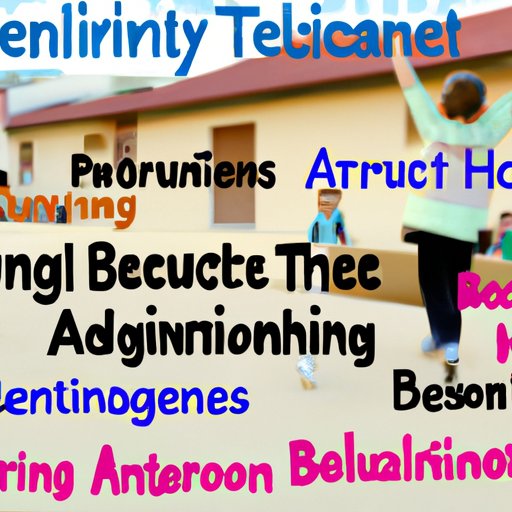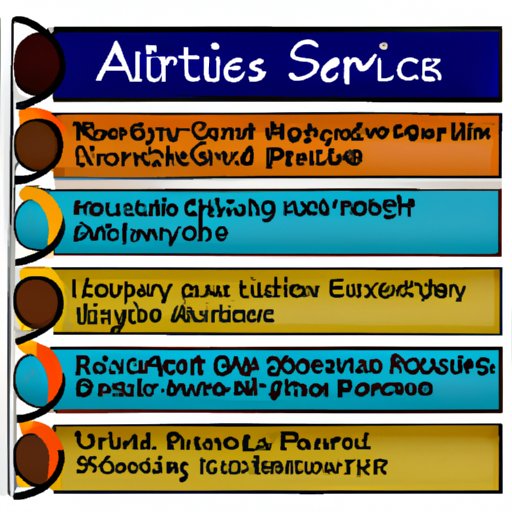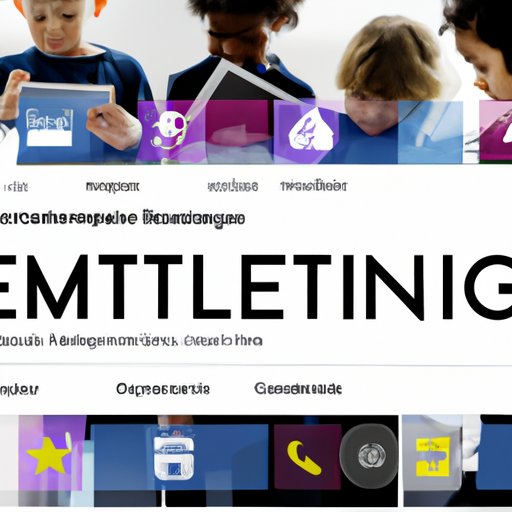Introduction
Authentic learning with technology is a modern approach to teaching and learning that focuses on providing students with real-world experiences and opportunities to apply their knowledge and skills. Through the use of technology, educators can create engaging and meaningful learning experiences that promote critical thinking, problem solving, and collaboration. In this article, we will explore the definition and benefits of authentic learning with technology, strategies for introducing it in the classroom, and examples of how technology can be leveraged to enhance student engagement.
Definition of Authentic Learning with Technology
Authentic learning with technology is an educational approach in which students learn by doing. It emphasizes the use of real-world problems, activities, and tasks that are relevant to students’ lives. By providing students with the opportunity to engage in activities that have meaning and purpose, they become more engaged in their own learning and develop a better understanding of the material. Additionally, authentic learning with technology encourages students to use technology to collaborate, communicate, and reflect on their learning.
According to a study by the International Society for Technology in Education (ISTE), “Authentic learning is an approach to instruction that encourages learners to explore real-world problems and challenges, make decisions, and apply knowledge in meaningful ways.” This type of learning helps students develop higher-order thinking skills and encourages them to think critically about their work. Additionally, authentic learning with technology provides students with the opportunity to connect their learning to the real world and explore how technology can be used to solve problems.

Benefits of Authentic Learning with Technology
The use of technology in authentic learning offers numerous benefits for both educators and students. For example, research has shown that authentic learning with technology can lead to increased student engagement, improved academic performance, and enhanced critical thinking and problem-solving skills. Additionally, authentic learning with technology enables students to explore real-world issues and develop their creative and collaborative skills. The use of technology also allows educators to provide students with personalized learning experiences that are tailored to their individual needs and interests.
A study conducted by the National Center for Education Statistics found that “students who participated in authentic learning activities with technology reported positive effects on their motivation, engagement, and self-efficacy.” Furthermore, a separate study by the American Educational Research Association found that “students who participated in authentic learning activities with technology showed greater gains in problem-solving skills than those who did not.”
Introducing Authentic Learning through Technology in the Classroom
Educators can introduce authentic learning with technology into the classroom in a variety of ways. First, it’s important to assess student needs and goals in order to determine what type of authentic learning activities would be most beneficial. Additionally, educators should establish learning objectives for each activity and plan out the steps necessary to achieve them. Finally, educators must decide which technology tools to use and how to integrate them into the activities.

Assessing Student Needs and Goals
Before introducing authentic learning with technology into the classroom, it’s important to assess student needs and goals. Educators should consider the types of activities that will best meet their students’ needs and interests. For example, if students are interested in exploring how technology can be used to solve real-world problems, educators may want to incorporate activities that involve coding or robotics. Additionally, educators should consider the learning objectives they wish to accomplish with each activity and how they can use technology to support those objectives.
Establishing Learning Objectives
Once educators have assessed student needs and goals, the next step is to establish learning objectives for each activity. Learning objectives should be specific, measurable, and achievable. Additionally, they should clearly outline the skills and knowledge that students need to acquire in order to complete the activity successfully. By setting clear learning objectives, educators can ensure that students understand the purpose of each activity and can focus their efforts on achieving the desired outcomes.
Planning Authentic Activities
After establishing learning objectives, educators must then plan out the activities that will help students reach those objectives. When planning authentic activities, it’s important to consider how technology can be used to support and enhance the activity. For example, if the activity involves researching a particular topic, educators may want to incorporate online databases or other digital resources. Additionally, educators should consider how the activity can be adapted to fit different learning styles and abilities.
Designing an Authentic Learning Experience with Technology
Once the activities have been planned, educators must then decide which technology tools to use and how to integrate them into the activities. When selecting technology tools, educators should consider the type of activity and the learning objectives. For example, if the activity involves creating a multimedia presentation, educators may want to use a presentation software such as PowerPoint or Prezi. Additionally, educators should consider the various ways in which the technology can be used to support the activity, such as providing feedback or displaying data.
Leveraging Technology to Enhance Authentic Learning
In addition to selecting the appropriate technology tools, educators must also consider how to leverage technology to enhance the learning experience. Technology can be used to encourage collaboration and communication between students, promote reflection and self-assessment, and provide feedback on student progress. Additionally, technology can be used to facilitate group discussions, provide access to digital resources, and create interactive learning environments.
For example, a study conducted by the University of Michigan found that “the use of technology to facilitate group discussions resulted in increased student engagement and improved learning outcomes.” Additionally, a separate study by the Stanford Center for Education Policy Research found that “the use of technology to provide feedback and assessment had a positive impact on student achievement.”

Enhancing Student Engagement with Authentic Learning and Technology
In order to maximize the benefits of authentic learning with technology, educators must strive to create engaging and interactive learning experiences for their students. One way to do this is by incorporating gamification, which involves using game-like elements such as points, levels, and rewards to motivate students and keep them engaged. Additionally, educators can create interactive learning environments by incorporating virtual field trips, simulations, and other immersive activities.
Furthermore, technology can be used to create personalized learning experiences for students. For example, a study conducted by the Harvard Graduate School of Education found that “the use of technology to provide personalized instruction resulted in increased student engagement and improved academic performance.”

Incorporating Technology into Authentic Learning Experiences
In addition to incorporating gamification and interactive learning environments, educators can also use technology to enhance authentic learning experiences. For example, mobile devices such as smartphones and tablets can be used to provide students with access to digital resources and allow them to collaborate and communicate with one another. Additionally, augmented and virtual reality can be used to create immersive learning experiences that allow students to explore new concepts and ideas in a safe and engaging environment.
A study conducted by the Massachusetts Institute of Technology found that “the use of augmented and virtual reality in the classroom resulted in increased student engagement and improved learning outcomes.” Furthermore, a separate study by the University of California found that “the use of mobile devices to access digital resources resulted in increased student engagement and improved academic performance.”
Conclusion
Authentic learning with technology can provide students with meaningful and engaging learning experiences that promote critical thinking, problem solving, and collaboration. By assessing student needs and goals, establishing learning objectives, and selecting the appropriate technology tools, educators can create authentic learning experiences that leverage technology to enhance student engagement and learning outcomes. Additionally, incorporating gamification, virtual field trips, and other interactive activities can help to create personalized learning experiences for students.
(Note: Is this article not meeting your expectations? Do you have knowledge or insights to share? Unlock new opportunities and expand your reach by joining our authors team. Click Registration to join us and share your expertise with our readers.)
